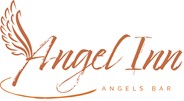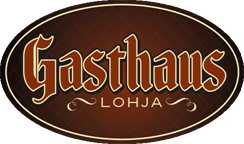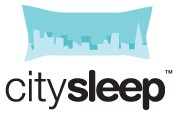Each customer has different motives on why they buy, their experience expectations, what their needs are and a level of willingness to pay at a certain price point for a great experience.
To generate the maximum profit from room reservations, meetings and events or food and beverage sales, you’ll need as a hotel operator to adopt a robust approach to your pricing strategy.
How you, as a hotel, set your prices will have a direct impact on your bottom-line profits and reputation in the market with customers and prospective guests.
Forming a pricing strategy
Dropping prices may initially stir some interest in your property, for those guests that are price sensitive – but this is not a sustainable strategy, as rarely do price reductions boost revenue growth by increasing occupancy over the longer term.
A lot of thought and research needs to go into developing a hotel pricing strategy that makes sense to your customers and your business.
To be able to target and market to a range of customers that behave differently with an appropriate offer, the first action you need to take is to segment your customers.
Identifying what the market segmentation is for your property will be critical if you are going to target the right type of offer to the right customer at the right time.
How do you segment the type of customers that visit your property?
Leisure guests can be individuals or retail customers that book direct or use an online travel agent (OTA) or may be a part of a tour group that has a block booking.
Business guests are individuals or contracted companies that have negotiated rates available only to corporate employees or customers that book through a particular travel agency or via the GDS (Global Distribution System).
Meeting or conference customers are delegates that may attend a conference or meeting at your property, some may also stay overnight.
Food & Beverage customers are those who pop in for a meal or drink as a passer-by or are a guest or delegate at the hotel.
By using segmentation, you can adopt a different pricing strategy for each customer segment, as they have different motivations and price points.
There are a number of factors that need to be considered when setting your room rates such as; average length of stay, the level of customer demand, seasonality, the business cycle, channel shift, the competitor environment, your property’s product positioning, and the costs of doing business.
What strategy best complements your business mix?
Choosing the right price positioning strategy for your base rates will strengthen your value perception and help you lay out a plan to follow for the year.
It is important to remember that price setting should be dynamic and situation driven, with changes in demand, local competition and the impact of seasonality taken into account.
It can also be useful to take a look historically at what was received well by your guests and in the market - do they have a particular preference in format, packaged, bundled, and inclusive, etc.?
The following are some suggestions on how to approach your pricing strategy to help build a better booking pace, increase your market share and hopefully as a result improve your bottom line results.
1. Are your managing your OTA channels?
The relationship you have with the OTAs helps drive revenue at those times when you feel you need extra reach or distribution that as an operator you cannot achieve on your own.
But you do need to analyse how much you use OTAs and how you can manage this channel so that it does not dilute your overall pricing strategy.
Remember, any reduction in the OTA commissions will go directly to the bottom line as profit. Plus, often the booking value of a direct reservation can be higher than that of an OTA booking as the profile of the guest may be somebody who is less price sensitive and you have the opportunity to build a longer-term relationship that just one booking if they make subsequent reservations direct.
2. Does demand match supply in the marketplace?
If you are the only property in town and there is a big event and your rooms are in demand, this should be reflected in the level of rates that you set. But it is important to make sure that you do not have too high a fluctuation from normal, select a fair price point and don’t be too greedy.
Ultimately, build a business for the long term with loyal and satisfied guests that you will want to support your business when demand slows down.
When looking at recent booking history and trends, pay close attention to anomalies that might affect pricing, such as economic conditions, weather, public holidays —anything that could cause data to be different year over year.
3. Are you monitoring your competitor’s prices?
It is important to be able to assess and benchmark your property against your competitor sets pricing levels, room types and different amenities. Using historical data can give a snap shot of trends, and provide a “feel” for market conditions, but there also should be a forecast based on the current environment.
Set the price of your most basic room to the cheapest rates available in the market and price your other rooms close to your competitors’ basic room prices if you want to penetrate the market.
Or if you are looking to take a higher rate positioning, find a local competitor and set one room rate at the same price point as they have available, and set another room rate at a slightly higher rate.
Matching the rate strategically lets customers see how you are price positioning yourself, with the opportunity to up sell customers to a more expensive room with added value extras or amenities to justify any price difference.
4. Is your pricing strategy aligned with your hotel image?
Develop a clear value proposition that equates to the values of your hotel experience and the services that you provide guests.
If you have not put enough thought in setting prices you may destroy all your brand-building efforts. If you have positioned yourself as a three-star property, offering rates of a five-star property it will turn-off customers.
5. Using pricing promotions.
Don’t be too aggressive with your price promotions, as this could leave a doubt in a potential customer’s mind over the quality of your property.
If the prices are kept low, you may generate more bookings, but it will be at the cost of eating into profit margins. And having to raise rates when conditions improve may be more difficult to do than you thought, as customers have an expectation of the price point they are prepared to pay.
6. Have you identified your customers?
Market segmentation identifies the purpose of your guests’ trip from leisure to business to meeting delegates.
For example, if you manage a spa resort you should have a different approach to pricing compared to an airport hotel where the purchase behaviour and guest experience are likely to be different. The length of stay, the advance booking period and the amenities demanded will vary, and so to the rate at which a room is sold for.
7. Assessing your distribution channels.
Booking channels such as your website and OTAs (Online travel Agents) should be regularly monitored to compare costs versus revenue returns.
Each online distribution channel should play a different role in your hotel marketing mix, rather than relying solely on one. For example, the OTAs may help in the short term but it can prove to be a costly tactic over time.
You’ll need to assess how much business comes to your property directly through your own brand website. Direct bookings will ultimately cost you less, earn you more and allow you to engage directly with the guest to build your own relationship.
8. Direct bookings
Direct bookings via your own website will lift your bottom line performance, increase margins and reduce operating costs.
Consumers in their “deal mentality” intrinsically feel that they want to have a direct relationship to get the best possible deal. A hotel website is the ideal platform for your property to be able to do this.
Guests that come through a direct booking channel, provide you with the opportunity to understand their particular needs, and to build an emotional bond between them and your hotel.
9. A happy customer is a loyal customer.
Satisfied guests are the best for “word of mouth” marketing and should be encouraged to refer their friends and family to stay at your property.
Offer a promotion code to be redeemed at the time of booking on your website for a special deal or consider offering a discount off an additional night.
From business to pleasure
Happybooking is first and foremost a property management system. That means they help you with the boring admin and automate tasks giving you more time to focus on keeping your guests happy. On average customers can get back up to 10 hours per week – think what you could do with that extra time!
Happybooking have always focused on creating a user-friendly booking system to help property owners improve their revenue performance and generate more income and reduce costs by enabling guests to book directly rather than go through a third party.
Our guest blogger is John Kennedy. John is a hospitality consultant, dedicated to helping increase profits through marketing, revenue management and efficient operations. www.kennedyandersson.com
Image source: www.pexels.com



